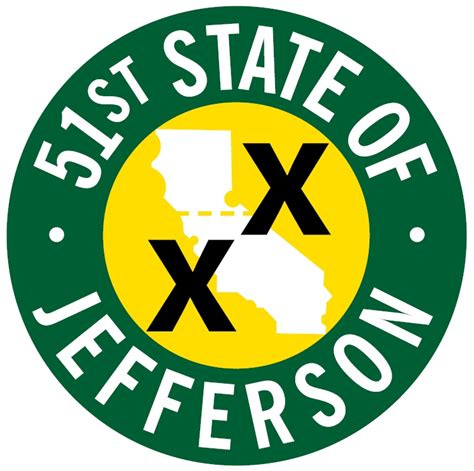Nations By Consent - Part III: Rethinking Secession
A Just and Genuine Nation is Built By Consent
In our study of Murray Rothbard's classic essay, Nations By Consent, we have explored nations as often-impercisely defined cultural boundaries. In the last investigation, we covered the fatal flaws of an interventionist foreign policy in the footsteps following Woodrow Wilson.
Today, we encounter Rothbard’s case for secession to justly reflect the will of a territory's inhabitants.
Genuine Nations
Secession has made substantial headway into political discourse as a result of the discontent that has sprouted various populist movements and a seemingly overheated political environment, where differences are not always cordial, and notions of pluralism have been given the scoff.
From fairly successful campaigns - such as Catalonia and Brexit - to longshot proposals, like Texit, Calexit, and the State of Jefferson - the issue of secession has gained momentum and serves as a shift in the Overton Window to the annoyance of an establishment that once casually dismissed “national divorce” as a fringe issue that made for fodder when the time came to attack a bogeyman.
But if this has actually taken the talking heads for a spin, what has motivated the desire for such a desire?
Murray Rothbard expressed the desired objective “to transform existing nation-states into national entities whose boundaries could be called just,” in the same way he saw private property boundaries. This would ultimately “decompose existing coercive nation-states into genuine nations, or nations by consent.”
To Rothbard, secession was not only defensible, but desirable.
In short, every group, every nationality, should be allowed to secede from any nation-state and to join any other nation-state that agrees to have it. That simple reform would go a long way toward establishing nations by consent. The Scots, if they want to, should be allowed by the English to leave the United Kingdom, and to become independent, and even to join a Gaelic Confederation, if the constituents so desire.
But, one may ask, what about the trade barriers this might create? As Rothbard saw it, more independent and smaller nations meant each barrier had less power. Likewise, fiat monetary systems would have less illusory power over the public.
For it would be far more difficult to sow the illusion of self-sufficiency if the slogan were “Buy North Dakotan” or even “Buy 56th Street” than it now is to convince the public to “Buy American.” Similarly, “Down with South Dakota,” or a fortiori, “Down with 55th Street,” would be a more difficult sell than spreading fear or hatred of the Japanese. Similarly, the absurdities and the unfortunate consequences of fiat paper money would be far more evident if each province or each neighborhood or street block were to print its own currency. A more decentralized world would be far more likely to turn to sound market commodities, such as gold or silver, for its money.
A Revolution From What?
In the United States, it is all too typical of secessionist propositions to be shouted down with the worst possible suspicions. A Twitter war may even have secession equated with the return of the worst features of the Old South. Needless to say, this is nonsense only worthy of ridicule.
The ability of a territory to withdraw from an overbearing government is precisely what made the American experiment possible. The Declaration of Independence was largely inspired by Virginia's Declaration of Rights, in which George Mason declares:
That government is, or ought to be, instituted for the common benefit, protection, and security of the people, nation, or community; of all the various modes and forms of government, that is best which is capable of producing the greatest degree of happiness and safety and is most effectually secured against the danger of maladministration. And that, when any government shall be found inadequate or contrary to these purposes, a majority of the community has an indubitable, inalienable, and indefeasible right to reform, alter, or abolish it, in such manner as shall be judged most conducive to the public weal.
Thomas Jefferson echoed this sentiment in the Declaration:
Governments are instituted among Men, deriving their just powers from the consent of the governed, --That whenever any Form of Government becomes destructive of these ends, it is the Right of the People to alter or to abolish it, and to institute new Government, laying its foundation on such principles and organizing its powers in such form, as to them shall seem most likely to effect their Safety and Happiness.
Not only are these passages relevant to the breakaway from Great Britain, the United States was declared internally to consist of “free and independent states.” King George would recognize each state within the Union as an equal to Great Britain in terms of sovereignty.
The Articles of Confederation declares in Section II:
Each state retains its sovereignty, freedom and independence, and every Power, Jurisdiction and right, which is not by this confederation expressly delegated to the United States, in Congress assembled.
In the US Constitution, this principle was embodied in the Tenth Amendment.
It would be a mistake to confine the advocacy of secession to the American South. In 1803, seeing the Louisiana Purchase as a threat to their power and interests, the New England Federalists began threatening to secede from the Union. The New England Federalist Party also considered secession in 1814 at the Hartford Convention in response to James Madison's mercantilism and the War of 1812.
Who Will Pay the Debt?
Now that we have established both the theoretical and historical basis of secession, it's imperative to explore its practicality. With varying degrees of sincerity, the issue of debt is brought up by skeptics of secession.
While a dissolution is often bound to be a process full of uncertainty and contention, Ryan McMaken of the Mises Institute points to the Czech-Slovak Split as a successful model to consider.
Perhaps the "ideal" national split is the dissolution of Czechoslovakia in 1992, which was a case of a "highly integrated" federal state peacefully negotiating a separation into two new sovereign states. Although negotiations were often tense, both sides did eventually agree to a plan of dividing assets and debts "generally based on relative population and location." That is, debts were allocated based largely on a 2:1 ratio, with Czechs being the more populous group. However, many aspects of the negotiations were problematic. Both Czech and Slovak activists contended they were being exploited by the other side. The Slovaks, who were outnumbered by the wealthier Czechs, often felt that the Czechs received an unfair advantage because the outgoing federation's assets tended to be concentrated in Czech areas. Ultimately, however, negotiations concluded peacefully.
External Resources:
Nations By Consent by Murray Rothbard
The Hartford Convention and the Specter of Secession by Mark Janis
After Secession, What Happens to the National Debt? by Ryan McMaken






